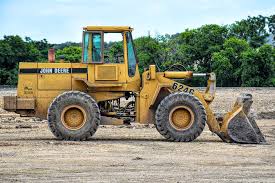 Few companies look forward to the hassle of replacing equipment. If the aging truck, MRI or construction machinery is still running but no longer optimal, you may be tempted to keep it in service until the very last splutter–but you realize it’s not the best decision. After all, delaying replacement of old equipment can reduce costs in the short term but prevent your company from advancing or even remaining competitive.
Few companies look forward to the hassle of replacing equipment. If the aging truck, MRI or construction machinery is still running but no longer optimal, you may be tempted to keep it in service until the very last splutter–but you realize it’s not the best decision. After all, delaying replacement of old equipment can reduce costs in the short term but prevent your company from advancing or even remaining competitive.
“Sweating the asset,” as this practice is known in the trucking industry, quickly becomes counter-productive as equipment owners miss out on the significant cost savings that operating a new, more efficient unit can bring. Not only are new units almost always more efficient; they’re often safer and easier to operate, due to design modifications meant to improve the user experience.
Many new models also come with features or options that weren’t available on older models. These may include sensors that gather information about the equipment’s amount and type of usage, both of which are instrumental to proper maintenance.
Every industry has standards or guidelines for replacing equipment. Vehicle maintenance managers, for example, may use fleet-management software to track downtime and repair costs by unit, allowing them to easily spot upward trends. When the costs of keeping an older unit in operation exceed the cost of acquiring a new one, it’s time to shop for a replacement.
Lawncare professionals have similar rules of thumb when it comes to replacing equipment. Consultants such as those at Green Industry Pros say continuing to use old, well-worn mowers, edgers, trucks and trailers can not only generate excessive repair bills and costly downtime, but also reduce the potential trade-in value of the machines.
Some lawn and landscape companies rotate riding equipment every three years to avoid big engine-repair bills. But others multiply each unit’s horsepower by 100—especially for air-cooled riding mowers—to estimate expected hours of engine life and perform timely maintenance and trade-ins.
Of course, there are always exceptions to a rule. One business owner might boast of the motor coach that logged a million miles; another of the dump truck that wouldn’t quit, going 30 years before succumbing to corrosion. What these owners usually don’t mention, however, is the time, money and well-being lost to what can generally be termed “equipment obsolescence.” Injuries to workers. Pollution and property damage caused by belching smoke or leaking oil. Overtime hours spent making repairs or finding temporary replacements must also be considered.
In a recent article on sweating the asset, American Trucker reported that many transportation companies repeatedly try to coax as much life as possible from their equipment, hoping each time for better financial results. “Unfortunately, many of these [companies] remain challenged with their financial results since this practice, while avoiding the initial cost of equipment replacement, also prevents them from realizing the significant savings returned through the use of a more efficient unit,” the industry source observed.
It may seem ironic and counter-intuitive that replacing old equipment sooner could generate significant savings for your company. But by taking steps now to start tracking repairs and down time per unit—or comparing today’s data with past and future results if you’ve already implemented tracking—you and your business can stay dollars ahead in the long run. You’ll also probably enjoy added benefits from the improvements in safety, design and ease of operation that so many new equipment products offer.




